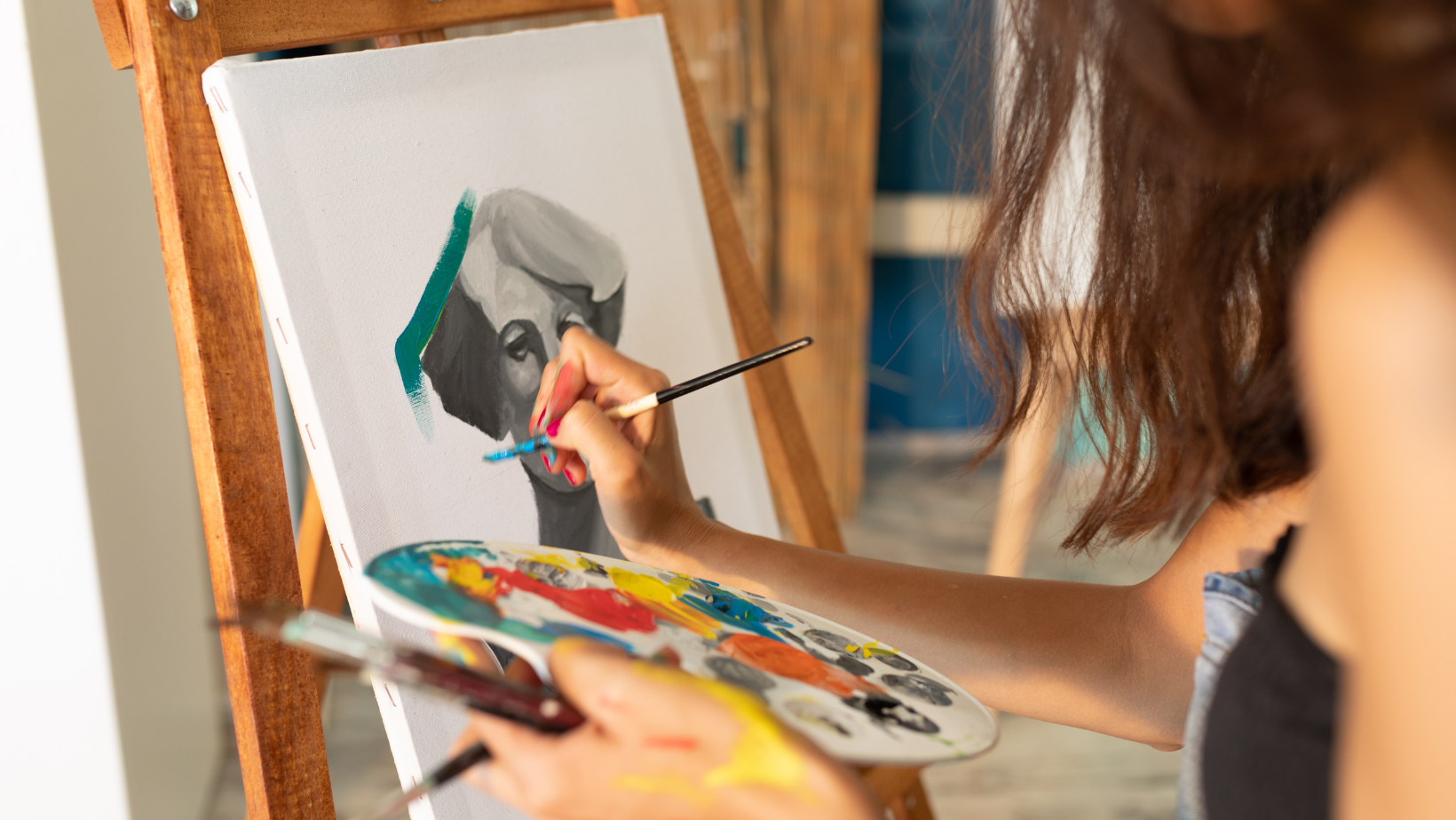Has your student dedicated their time and talent to the visual arts over the course of their high school career? Do they have a passion for painting or ceramics (or maybe dance or music!) but don’t necessarily want to pursue a fine arts major in college? Here is why a supplemental portfolio might be a great addition to their college applications!
What is a Supplemental Portfolio?
A supplemental visual arts portfolio is an optional component of a college application that allows students to showcase their artistic talents, even if they are not applying to an arts-specific major. It provides admissions committees with insight into a student’s creativity, artistic abilities, and dedication to the arts. This can be especially beneficial for students who excel in areas like drawing, painting, photography, sculpture, or digital arts and want their artistic work to be considered as part of their holistic application review. Supplemental portfolio materials can also often be submitted in other areas such as music, creative writing, and dance.
As example, check out details about supplemental portfolio submission from Dartmouth, Princeton, Bates, and Oberlin.
What Should Be in Your Portfolio?
- Content
-
- There are generally two approaches to building a visual arts portfolio. One focuses on depth while the other focuses on breadth. Students may choose to share a collection of work in the same medium to show mastery of the material or, they may want to make sure all of their portfolio pieces connect to a common theme and “belong together” while still showcasing a variety of skills or techniques. Other students may not have had the chance to develop a body of work with intentional focus and so may opt for sharing a portfolio that demonstrates a range of materials, subjects, and interest areas. Whatever your student chooses to include, they should make sure they are choosing their best work and not adding pieces unnecessarily.
- Organization
-
- Students should organize their portfolio to flow naturally. You might start with your strongest pieces and group similar works together by theme or medium. Students will often be instructed to include brief descriptions that explain the concept, process, and materials used in each piece.
Want more tips on what to include in your portfolio? Check out advice from Columbus College of Art and Design.
Documenting Your Work Effectively
A student’s portfolio may consist of physical work, but most applications require digital submissions. It’s crucial for students to document their pieces in a way that represents them accurately and professionally.
- High-Quality Photography
- Use a good camera or smartphone with a high-resolution setting to photograph your artwork. Make sure the lighting is even, natural if possible, and avoid harsh shadows or reflections. Use a plain, neutral background that won’t distract from your piece.
- Scanning
- For smaller, flat works like drawings or prints, scanning can provide crisp, clean images. Be sure to scan at a high resolution (300 dpi or more) for the best quality.
- Editing
- After photographing or scanning, you may need to adjust the brightness, contrast, or color to match the original piece. Avoid over-editing, as this can distort your work and give an inaccurate representation.
- Video Documentation
- For three-dimensional works like sculpture or installations, consider using video to showcase multiple angles and dimensions. A slow, steady shot, possibly with a brief explanation or voiceover, can help the viewer fully appreciate the piece.
- Digital Formats and Platforms
- Many schools have specific requirements for how to submit your portfolio (e.g., PDF, JPEGs, or specific portfolio platforms like SlideRoom). Pay close attention to these details to avoid any technical issues. Compress files without sacrificing quality and ensure that everything uploads correctly.
Final Thoughts
A well-prepared portfolio is more than just a collection of artworks; it’s a story about your student as an artist and how they see the world. A supplemental portfolio can help an admissions team get to know your student beyond what their other application materials represent.
Want to talk more about portfolio submission? Reach out at info@galined.com.




